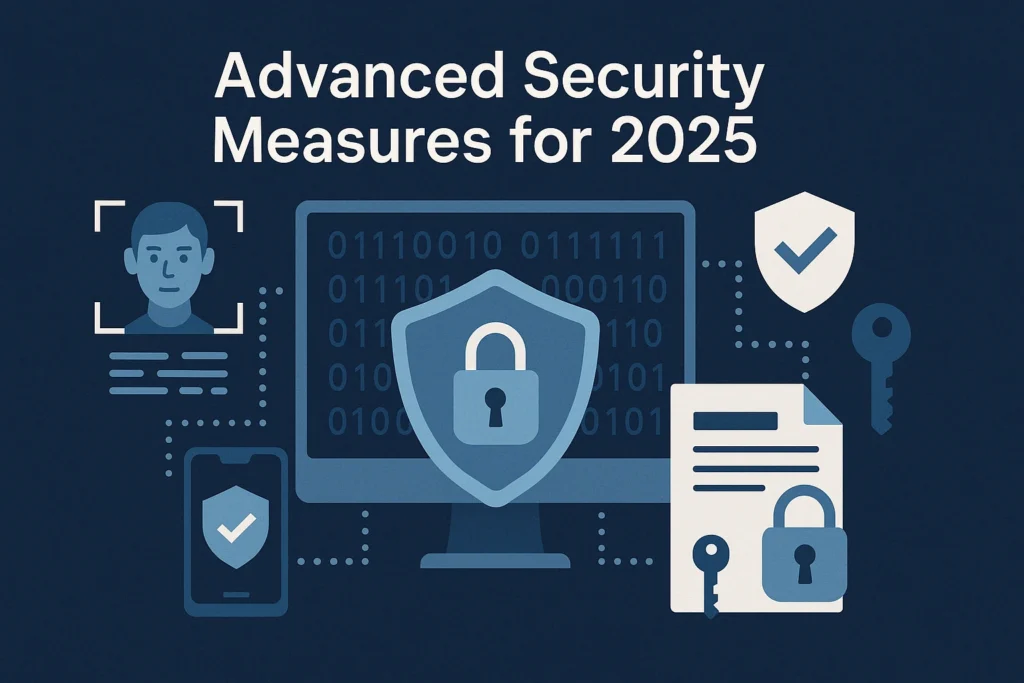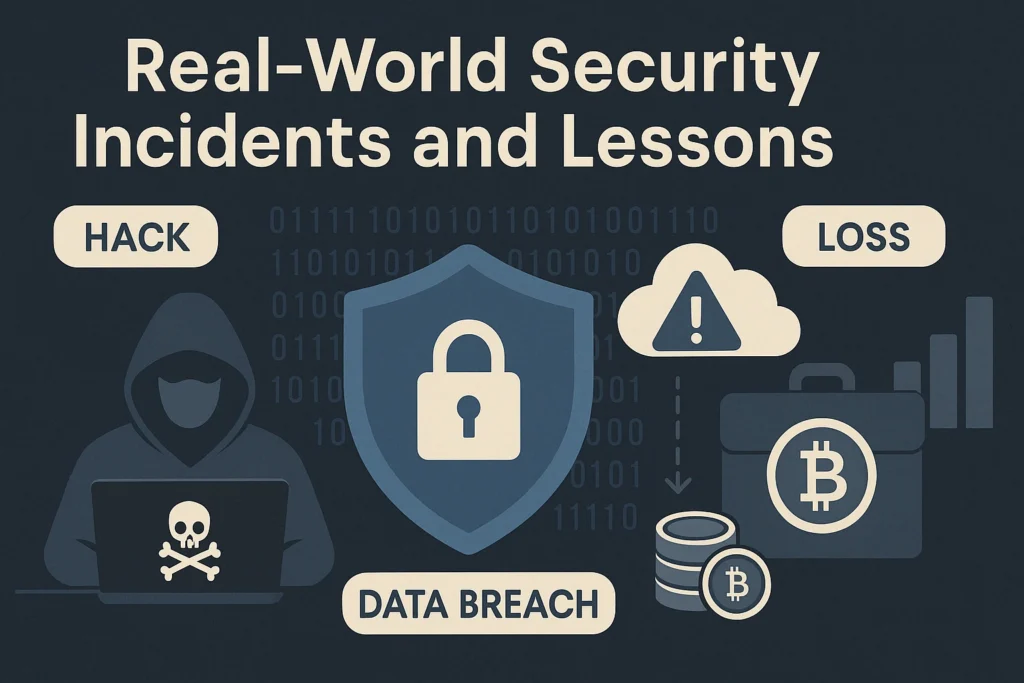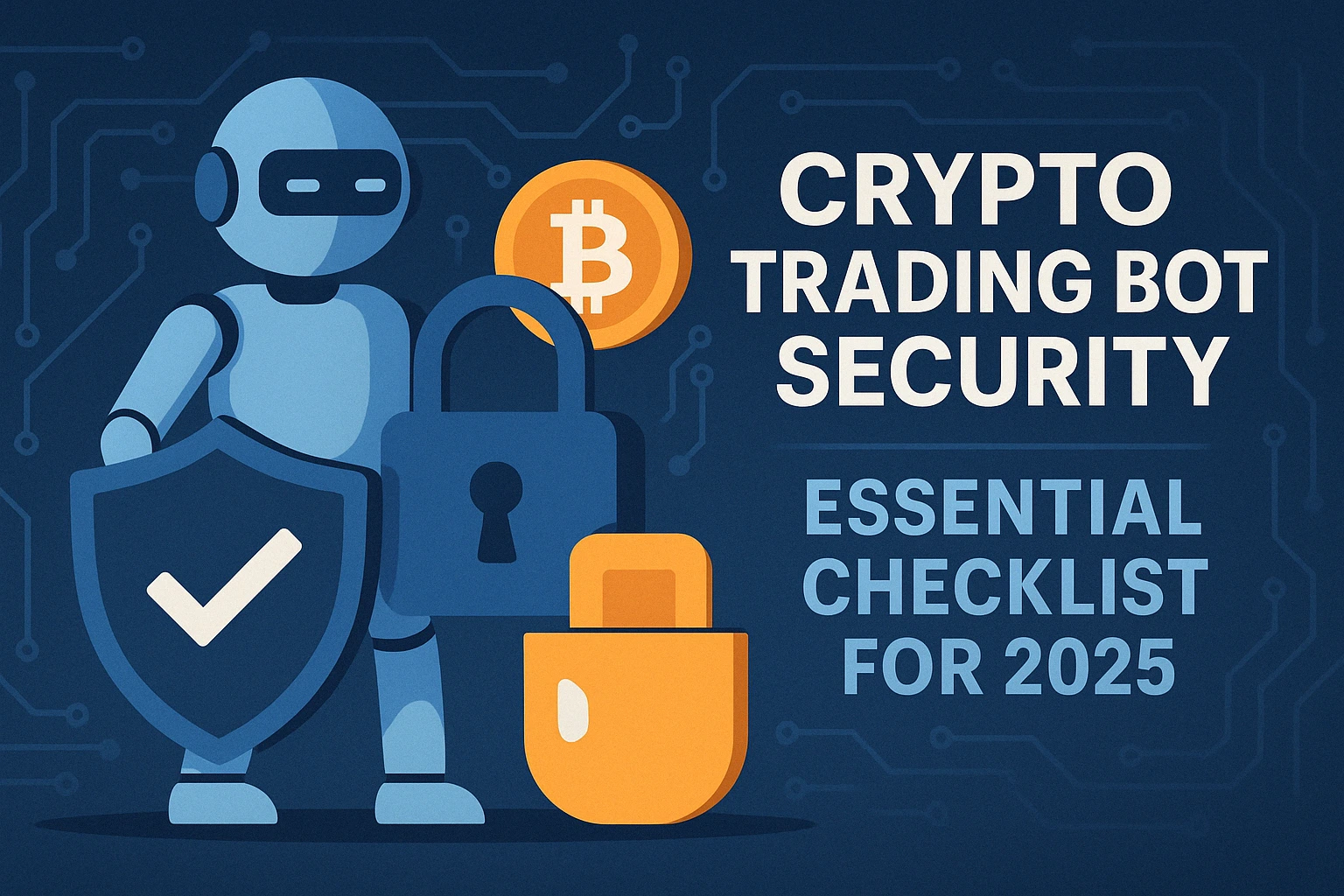As we navigate through 2025, automated trading systems continue to dominate the cryptocurrency landscape. Having spent the last seven years developing and securing crypto trading algorithms, I’ve witnessed firsthand how security vulnerabilities can devastate even the most profitable trading systems. The rapid evolution of both trading bots and the threats targeting them demands a comprehensive security approach that many traders overlook until it’s too late.
This year has already seen major exploits targeting trading bot infrastructures, with over $217 million lost in the first quarter alone due to compromised APIs and vulnerable bot architectures. Whether you’re running simple grid bots or sophisticated market-making algorithms, proper security implementation isn’t optional—it’s the foundation that determines whether your automated strategy builds wealth or becomes another cautionary tale.
Let’s dive into the essential security checklist that has kept my trading systems secure through market cycles, hacking attempts, and the ever-evolving crypto landscape.
Core Security Principles for Crypto Trading Bots
API Security: Your Primary Defense Line
When your bot interfaces with exchanges, your API keys become the most critical vulnerability point. Here’s what you need to implement:
Permission Restrictions
Always configure API keys with the minimum permissions necessary:
- Trading-only permissions when possible
- Withdrawal restrictions enabled for all bots
- IP whitelisting to limit access to specific servers
- Time-based restrictions for keys used in short-term operations
I learned this lesson the hard way in 2022 when one of my secondary trading servers was compromised. Because I had properly restricted withdrawal permissions, the attackers could only execute trades—not steal funds. This saved me approximately $43,000 in assets while I regained control.
API Key Management
Warning: 37% of crypto trading bot breaches in 2024 resulted from improper API key storage practices.
Api Key Storage Best Practices
| Storage Method | Security Level | Implementation Complexity | Recommended For |
|---|---|---|---|
| Environment Variables | Medium | Low | Development/Testing |
| Encrypted Config Files | Medium-High | Medium | Small-scale operations |
| Hardware Security Modules | Very High | High | Professional operations |
| Secret Management Services | High | Medium-High | Cloud-based bots |
| Encrypted Databases | High | Medium | Multi-exchange bots |
Code Security & Integrity

Regular Code Audits
Having written and maintained trading systems since 2018, I can confirm that code vulnerabilities often emerge gradually as exchange APIs and market conditions evolve. Schedule comprehensive code reviews at least quarterly, focusing on:
- Authentication mechanisms
- Data validation processes
- Error handling protocols
- Encryption implementations
- Third-party dependencies
Dependency Management
Modern trading bots typically incorporate dozens of libraries and dependencies. Here’s my approach to managing them securely:
- Scheduled dependency audits using automated tools
- Verification of package integrity via checksums
- Version pinning for all production dependencies
- Supply chain monitoring for key components
- Minimal dependency philosophy – if you don’t absolutely need it, don’t include it
Infrastructure Security
Network Security Architecture
Your bot’s network environment requires layered protection:
Implement Network Segregation
Trading bots should operate in segregated networks with:
- Dedicated VPNs for administrative access
- Traffic filtering at multiple levels
- Encrypted communication channels
- Separate environments for development and production
Server Hardening
Critical insight: In my experience managing large-scale trading operations, proper server hardening reduces exploit attempts by approximately 87%.
Essential hardening measures include:
- Regular security patches (within 24 hours of release)
- Minimal server services (disable everything not essential)
- Host-based intrusion detection systems
- File integrity monitoring
- Regular security baseline auditing
Advanced Security Measures for 2025

Multi-Factor Authentication Beyond Basics
Standard 2FA isn’t sufficient for high-value trading systems in 2025. Implement:
Hardware Security Integration
- Hardware security keys (Yubikey or similar)
- Biometric verification for critical operations
- Time-based operation windows restricting when certain functions can execute
- Geographic restrictions based on normal operation patterns
Behavior-Based Anomaly Detection
Modern trading bot security extends beyond static rules to incorporate behavioral analysis:
- Trading pattern monitoring to detect unusual operations
- Volume analysis that flags abnormal trade sizes
- Time-pattern analysis to catch operations outside normal hours
- Exchange-usage fingerprinting to identify unauthorized API access
I implemented these systems in early 2024 and they detected an attempted intrusion within hours—the attacker had valid credentials but their trading pattern triggered security alerts as they attempted to execute trades outside my algorithm’s normal parameters.
Redundancy and Failsafe Mechanisms
Circuit Breakers
Implement automated circuit breakers that:
- Pause trading during unusual market volatility
- Halt operations when security anomalies are detected
- Require manual verification after predefined loss thresholds
- Automatically disconnect from exchanges during suspected compromise
Backup Execution Paths
Design your system with multiple execution paths:
- Secondary exchange connections
- Backup API endpoints
- Alternative execution servers
- Offline recovery protocols
Emerging Threats in 2025
AI-Powered Attacks
This year has seen sophisticated attacks using AI to:
- Mimic legitimate trading patterns to avoid detection
- Reverse-engineer trading algorithms from market data
- Generate convincing phishing attempts specifically targeting bot operators
- Discover vulnerabilities in common trading libraries
Countermeasures for AI-Based Threats
To protect your trading systems:
- Implement unpredictable validation steps that challenge AI models
- Add random timing variations to API calls
- Utilize behavioral biometrics for administrative access
- Deploy honeypot systems to detect reconnaissance attempts
Cross-Exchange Vulnerabilities
A concerning trend in 2025 is attackers exploiting differences in exchange implementations to compromise trading bots that operate across multiple platforms.
Protection strategies include:
- Standardized security wrappers around all exchange APIs
- Exchange-specific security policies
- Regular penetration testing across exchange connections
- Unified logging across all exchange interactions
Implementation Checklist
Immediate Actions (Within 24 Hours)
- Audit and restrict all existing API keys
- Enable IP whitelisting where available
- Implement strong password policies
- Set up basic trading anomaly detection
- Enable all available 2FA options
Short-Term Implementation (1-2 Weeks)
- Deploy encrypted storage for API credentials
- Configure network segregation for bot operations
- Conduct initial code security audit
- Implement basic circuit breakers
- Set up comprehensive logging systems
Comprehensive Security (1-2 Months)
- Deploy hardware security modules
- Implement behavioral analysis systems
- Develop and test recovery procedures
- Configure advanced anomaly detection
- Conduct professional penetration testing
Real-World Security Incidents and Lessons

Case Study: The Delta Bot Compromise (January 2025)
In January 2025, a popular trading bot service lost approximately $31 million when attackers exploited a vulnerability in their API key rotation system. The attack went undetected for 72 hours because:
- The system lacked proper anomaly detection
- Withdrawals were executed below manual review thresholds
- Logs were not monitored in real-time
- The compromised keys had excessive permissions
Key Lesson: Implement defense-in-depth with overlapping security measures. No single protection mechanism is sufficient.
Case Study: Python Library Supply Chain Attack (March 2025)
A malicious update to a popular Python trading library affected over 4,600 trading bots in March 2025. The attack specifically targeted API credential extraction.
Key Lesson: Implement strict dependency validation and version pinning in production environments. Always verify the integrity of all dependencies before deployment.
Testing Your Bot’s Security
Security Audit Procedures
Regular security testing should include:
External Penetration Testing
Hire professional security experts to attempt to breach your system at least twice yearly. Focus on:
- API endpoint security
- Authentication mechanisms
- Network perimeter protection
- Social engineering resistance
Internal Vulnerability Assessment
Monthly internal security reviews should cover:
- Code dependency analysis
- Trading logic security review
- Permission scope verification
- Data protection assessment
- Recovery procedure validation
Continuous Monitoring
Set up ongoing security monitoring:
- Real-time log analysis with alerting
- Automated security scanning
- Trading pattern monitoring
- Exchange communication auditing
Building a Security-First Culture
For teams managing trading bots, establishing a security-focused culture is essential:
- Regular security training for all team members
- Documented security procedures with clear responsibilities
- Incident response planning with regular drills
- Post-mortem analysis for all security incidents, even minor ones
Future-Proofing Your Security Approach
As we move through 2025, several emerging technologies will impact trading bot security:
Zero-Knowledge Proof Integration
ZKP technologies are beginning to allow secure trading operations without exposing private keys or API credentials. Early implementations are showing promise for:
- Secure order execution without direct exchange API access
- Verified trading intent without revealing strategy details
- Multi-party authorization without credential sharing
Hardware Security Evolution
New dedicated hardware security solutions for crypto trading are emerging:
- Specialized HSMs for cryptographic trading operations
- Air-gapped signing devices for high-value trades
- Physical security modules with biometric verification
FAQ: Crypto Trading Bot Security
How often should I rotate my API keys?
Answer: For active trading systems, rotate API keys at least monthly. For high-value systems or those with withdrawal permissions, increase rotation frequency to weekly. Always completely replace keys rather than just regenerating secrets.
What’s the biggest security mistake most traders make?
Answer: Based on my experience, the most common critical error is using the same API keys across multiple platforms or bots. This dramatically increases your attack surface and makes it nearly impossible to identify the source of a compromise.
Are cloud-based bots less secure than self-hosted solutions?
Answer: Not necessarily. Cloud-based solutions often benefit from professional security implementations, but they represent centralized targets. Self-hosted solutions provide more control but require significant security expertise. The most secure approach combines elements of both with proper security implementation.
How can I tell if my bot has been compromised?
Answer: Watch for these warning signs:
- Unexpected trades or order cancellations
- Changed API settings or permissions
- Unusual network traffic to exchange APIs
- Performance degradation or unexpected errors
- Unauthorized access attempts in exchange logs
What’s the minimum security budget for a trading bot operation?
Answer: For serious trading operations, allocate at least 15-20% of your development budget to security implementation and testing. This percentage should increase with the value of assets under management.
Conclusion
As we navigate the complexities of automated crypto trading in 2025, security can no longer be an afterthought. The evolving threat landscape requires a proactive, multi-layered approach that addresses vulnerabilities across API management, code security, and infrastructure protection.
Remember that security is never “complete”—it’s an ongoing process that requires constant vigilance, regular updates, and a willingness to adapt to new threats. The most successful traders I’ve known over my years in the industry are those who prioritize security as highly as they prioritize their trading strategies.
By implementing the measures outlined in this essential checklist, you’re not just protecting your assets—you’re creating the foundation for sustainable, long-term success in automated crypto trading.
Disclaimer: This article provides general security guidelines but cannot account for all possible security scenarios. Always consult with security professionals when implementing trading systems that manage significant assets.

Leanora Leeper is a 38-year-old P2E expert. She is an ex-cybersport player who has competed in national and international tournaments. Leanora has a bachelor’s degree in business administration and is currently pursuing her master’s degree in the same field. She has held several positions of responsibility in both the public and private sectors.
Leanora is highly sought after for her expertise in the area of P2E (production to end-user). She has consulted for many large organizations, helping them to improve their processes and increase their efficiency. Leanora is known for her no-nonsense approach to problem solving and her ability to get things done quickly and efficiently.



